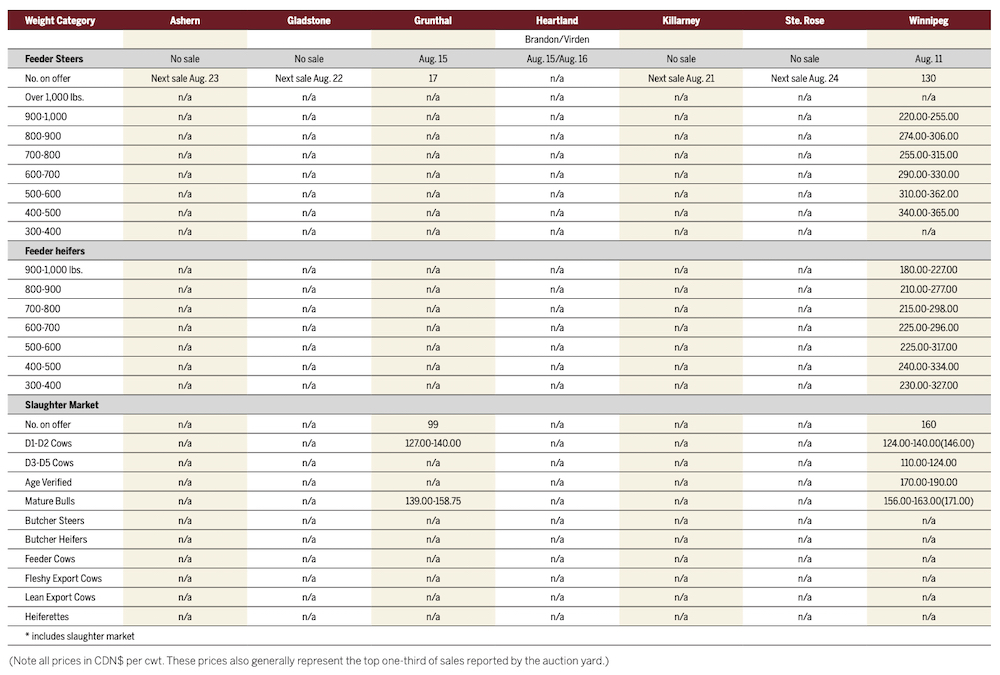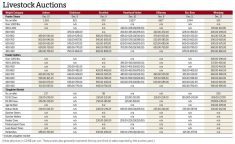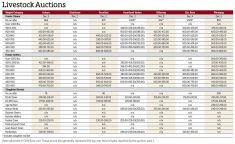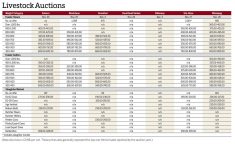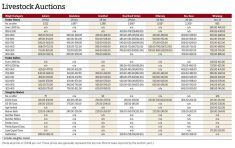Manitoba cattle auctions are gearing up for a busy fall run, with most yards around the province set to start holding regular auctions before the end of August. Prices remain historically strong, which should be bringing in some yearlings earlier than normal.
Given the current market conditions, it makes economic sense to start getting the yearlings off the ground and into market already, according to Rick Wright, cattle buyer and executive administrator of the Livestock Markets Association of Canada.
However, he added that it made sense to hold onto lighter calves as long as possible to put on weight and get higher returns.
Read Also
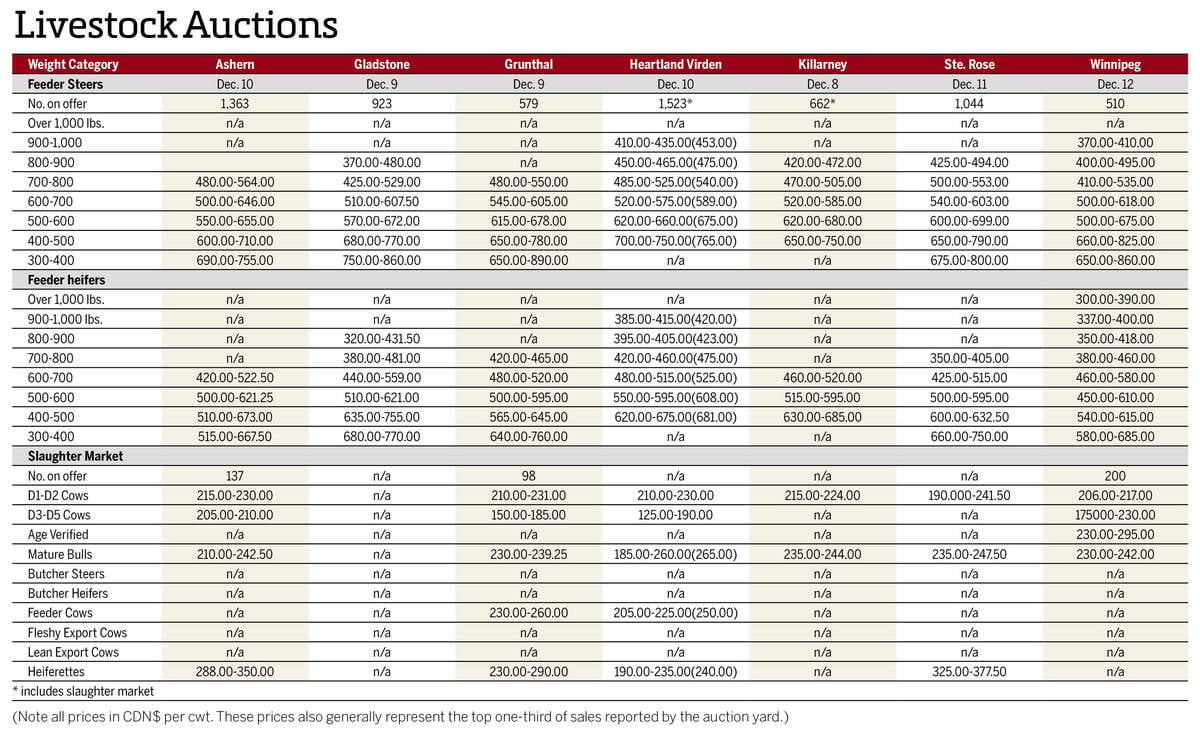
Manitoba cattle prices Dec. 16
Here’s what local farmers were getting paid last week for their cattle at Manitoba livestock auction marts; prices covering the week Dec. 8-12, 2025.
“The more pounds you put on a calve this year the better,” said Wright, noting that while pasture conditions were varied around the province, producers would likely be looking to graze stubble or cover crops where possible.
Heavier-weight feeder steers above 900 pounds were bringing in $220 to $255 per hundredweight, while the lightweight calves under 500lbs were priced around the $350/cwt area. Yearling heifers over 800lbs were also solid, with prices well above $200/cwt, with higher quality lighter heifer calves easily topping $300/cwt.
Cull cow pricing was also solid in the $125 to $140/cwt range for what was moving during the week ended Aug. 17.
Demand for Manitoba feeder cattle was coming from all sides, according to Wright. “Manitoba has the best of both worlds,” said Wright, noting that demand was coming from feedlots in both Alberta and Ontario, with some demand from the United States also evident.
“We are very confident that you’ll have a very good fall if you’re a seller,” said Wright, adding that the buyers were likely less excited about the market given the rising interest rates, carrying costs, and relatively high feed prices.
“For the cow/calf guys, for once in the last number of years they’re the ones in the drivers’ seat and will realize some good returns,” said Wright.
However, the lack of transportation remains an issue, and could become more prevalent when the numbers pick up in the fall.


